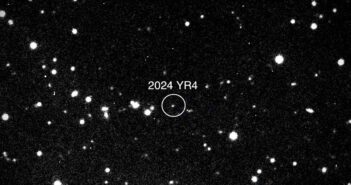
Features
An Update on Asteroid 2024 YR4 from JWST
Though the odds of asteroid 2024 YR4 striking Earth in 2032 have fallen to almost zero, the asteroid still has a slim chance of a collision with the Moon. New JWST observations tell us more about this potential impactor.

Astrobites
An aMACEing Set of Radio Galaxy Flares
Astrobites reports on two mysterious flares detected from a radio galaxy by the brand new MACE gamma-ray telescope.






